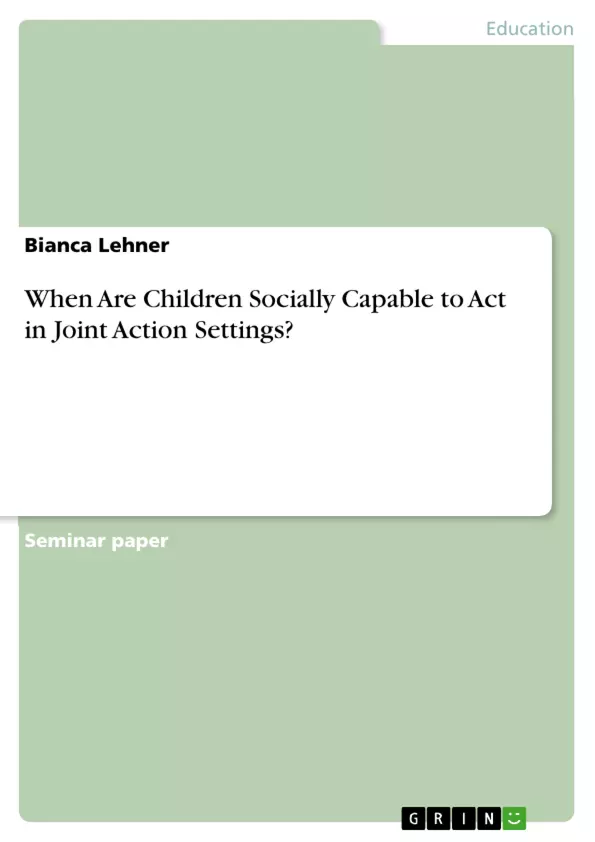The ability of acting jointly to achieve common goals seems to be distinctively of human nature and is important in order to take part in social life. However, the question of when this crucial capability for everyday life develops is a field quite new to and currently rather untouched by cognitive and neuronal sciences. Only a few studies deal with joint action settings in which infants of one or two years are supposed to act in cooperation with an adult or even with a same-aged peer.
This paper, therefore, aims at introducing some of these studies and their outcomes in order to discuss later on at which age children possess the social and cognitive skills needed to perform successfully in joint action settings.
Inhaltsverzeichnis (Table of Contents)
- Introduction
- What is joint action?
- Shared goal
- Shared representation
- Prediction
- Coordination
- What children understand of Joint Actions
- Motivation
- Sharing goals and intentions
- Joint commitments
- Language and Prelinguistic Communication
- Conclusions
- Future Prospects
- References
Zielsetzung und Themenschwerpunkte (Objectives and Key Themes)
This paper aims to explore the development of joint action capabilities in children, focusing on their social and cognitive skills. It investigates when children are able to recognize others' goals, share intentions, and understand the commitments involved in joint activities. The paper also examines the role of motivation and communication in joint action settings.
- The emergence of joint action abilities in infants and toddlers.
- The cognitive and social prerequisites for successful joint action.
- The development of understanding goals, intentions, and commitments in joint actions.
- The role of motivation and communication in fostering joint action.
- The relationship between helping behavior and cooperation.
Zusammenfassung der Kapitel (Chapter Summaries)
- Introduction: This chapter defines joint action as a form of social interaction where individuals coordinate actions in space and time to achieve a shared goal. It outlines the cognitive skills necessary for successful joint action, including shared goals, representations, prediction, and coordination.
- What children understand of Joint Actions: This chapter explores the development of joint action abilities in children. It examines how infants recognize others' goals, share intentions, and understand commitments in joint activities. The chapter also highlights the importance of motivation in fostering cooperation.
Schlüsselwörter (Keywords)
The primary focus of this text is on joint action, cooperation, and the social and cognitive development of children. Key themes include shared goals, intentions, commitments, motivation, communication, and the abilities of infants and toddlers to engage in collaborative activities.
- Quote paper
- Bianca Lehner (Author), 2011, When Are Children Socially Capable to Act in Joint Action Settings?, Munich, GRIN Verlag, https://www.grin.com/document/308719



